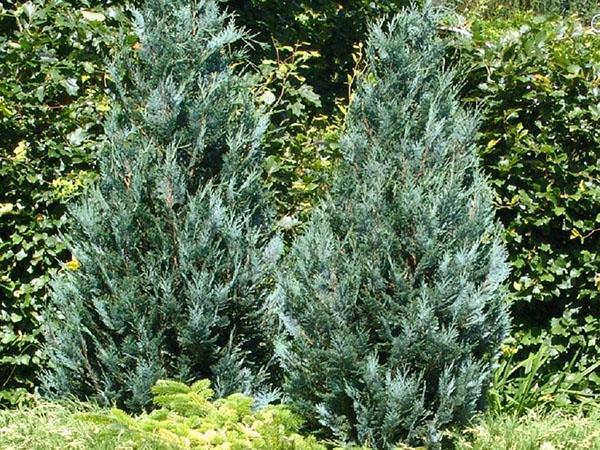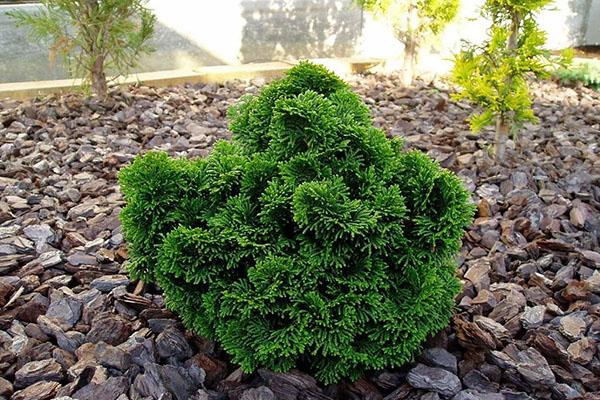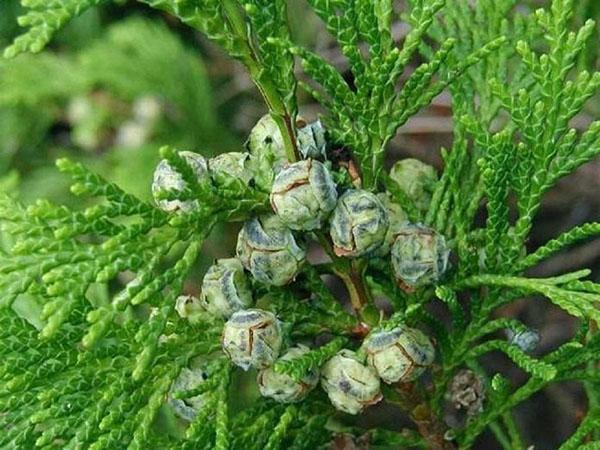Planting and caring for a cypress tree: practical advice from experts

Exquisite evergreen crops at all times were considered stylish design of a suburban area. Not surprisingly, planting and caring for cypress, today attracts many gardeners. The plant is wonderful fits into any landscape design. It gives it an exotic flavor, reminiscent of oriental landscapes. In addition, the cypress is in harmony with other garden plants.
Culture is appreciated not only for its attractive appearance, but also for its wood. In Japan, for example, religious buildings are built from cypress trees.
A pleasant acquaintance with the evergreen "prince"

Before you start planting and caring for a cypress, it is wise to get to know the plant better. The tree belongs to coniferous evergreen crops. His homeland is considered the northern part of the American continent or East Asia. There he grows up to 70 m in height, which causes an unprecedented delight. The maximum growth of a cypress tree in summer cottages reaches about 40 m.
There are 7 main types of plants:
- thuose;
- Lawson;
- nutkan;
- stupid;
- Formosian;
- yellow;
- pea.
They all have their own characteristics. Some look like luxurious shrubs. Others are like slender trees. For latitudes with cold climates, special varieties were bred: Japanese and North American. They can withstand temperatures as low as -35 ° C and do not even need additional shelter.
The plant does not tolerate dry periods, especially when the air warms up to 40 ° C.

The evergreen "prince" appears before us as a compact cone-shaped tree. Looking closely at it, you can see long branches drooping or prostrate character. The scaly bark is colored brown or Brown color. The needles are not only dark green. Meet varieties and with yellowish-green or bluish "foliage". I wonder what young the plants have needle-like needles. And in adult specimens, it is scaly. The tree bears fruit every year. Ripe buds are up to 12 cm in diameter. Inside each of them are seeds that are used for reproduction.
Planting and leaving behind a cypress: analysis of the main nuances

Since conifers are considered an exquisite decoration of the country landscape, growing them brings a lot of positive emotions.
Cypress trees often occupy a worthy place in the territory:
- rockeries;
- stone gardens;
- alpine slides;
- terraces;
- open verandas;
- lawns.
To independently create a similar oasis on the site, it is important to consider several nuances. Otherwise, the plant will not take root or lose decorativeness.
Appropriate place

Before proceeding with planting and caring for a cypress, a suitable site is chosen in the garden. The plant feels best in partial shade, where there is an abundance of diffused light. However, places where cold air is trapped should be avoided. These can be areas near natural or artificial reservoirs... Sunny spots are only suitable for varieties with yellowish-green needles. Dwarf varieties are placed in containers so they can migrate around the garden. Tall cypress trees successfully develop in single plantings or small compositions.
If yellowness appears on the needles, then the plant is receiving too much sunlight.You can protect it artificially or plant a tall crop nearby.
We take into account the composition soil

As a rule, overseas plants that take root in new territories are quite demanding on the composition and acidity of the soil. There is a basic pH standard (4.4-5.5) and types of soil for cypress: black earth or loam without limestone. Moreover, it must have high-quality drainage.

City dwellers can grow cypress in containers. The plant grows wonderfully indoors, therefore it is used for landscaping offices or spacious public classrooms.
Pit preparation

The most suitable time to grow an evergreen "prince" is, of course, spring. However, the planting of the cypress begins in the fall with the preparation of the pit. When the place has already been marked, it is carefully loosened. After that, a hole is dug about 90 cm deep. The desired width of the funnel is 60 cm. If it is planned to plant several specimens of cypress, the holes are placed at a distance of 4 m from each other.
A drainage layer of broken brick or gravel is laid on the bottom. It protects the roots from excess moisture. Its thickness is approximately 20 cm.
Next, create a unique dressing by mixing:
- sod land;
- humus;
- peat;
- river sand.
The fertilizer is combined with the soil and the prepared the funnel is about half. Cover with plastic wrap and securely fix its edges. Until spring, the earth will crinkle, slightly settle and fill useful elements.
Immediately before planting a plant in the ground, a hole watered with water. An earthen ball at the rhizome is treated with a growth stimulant. Then the seedling is carefully placed in the pit.
It is advisable to completely cover the root system of the culture with soil so that it successfully takes root in a new site.
Reasonable approach to watering

Planting and caring for a cypress includes regular moisture culture. Since it can hardly cope with dry periods, it is important water it regularly. It is enough to pour 10 liters of water under the roots every 3 days. TO in addition, cypress trees need additional spraying of the needles. It is carried out Once a week for adult shrubs and daily for young seedlings. The procedure is performed using a spray bottle.
After each watering, it is necessary to loosen the topsoil in the near-stem area.
Delicate pruning

For a luxurious crown and a pretty appearance species, gardeners carry out a planned pruning of the cypress. In early spring, remove broken, dry and frostbitten branches. When creating a pyramidal or cone-shaped crowns, no more than a third of the shoots are removed from the plant. Otherwise, it can get sick. In autumn, elongated and bare branches are removed, which violate the external structure crowns.
Formative pruning can only be done the next year after planting.
Available methods of culture propagation

You can breed a cypress in your country house in traditional ways:
- sowing seeds;
- grafting;
- use of layering.
The first option is only suitable for pure varieties. Main the reason is the loss of distinctive characteristics of the variety. The procedure starts from stratification of planting material. In the fall, it is sown in boxes with loose soil and left on the street. Severe frosts and snow will do the trick. In the spring the containers are brought into a warm room. After a while, sprouts appear. For successful growth, they are systematically watered and provided with diffused lighting. In mid-April, the containers are taken outside to harden the seedlings. When they will get stronger, planted in a shaded area.

Cypress cuttings begin from collecting material. Cut off suitable lateral shoots with a length of about 10 cm. Remove from the bottom needles, after which the cutting is placed in a special substrate. It is prepared by mixing crushed coniferous bark and perlite.
If desired, cuttings can be planted directly into the open ground.However, the bed should be covered with polyethylene to create a greenhouse effect.
The easiest way to propagate a cypress tree is use of layering. It is only suitable for varieties whose shoots are directed to the ground. First, choose an elastic branch. Make a cut in it and sprinkle soil. The plant is watered moderately throughout the season. In a year the seedling is separated from the mother bush.
Culture Transplant Secrets

No matter how quickly the cypress grows, it is sometimes transferred to a new site. The procedure is performed in early spring, when the plant is just gaining strength. In order not to damage the horizontal root system, the culture is dug out very carefully. First, the possible edges of the roots are marked on the surface of the earth, and then they get down to business.
When removing a plant from a funnel, it is necessary to preserve an earthen lump so that the culture will quickly take root in a new place.

Knowing how to transplant cypress from one container in the other, it will help preserve its decorative effect. First they soften the soil pouring water over it. Next, carefully separate the walls of the pot from the root system. Then the bush is carefully removed. Together with the remnants of the earth, the cypress is transplanted into a new container. Fill with soil and tamp lightly. The surface is abundant watered.
Having figured out the intricacies of planting, breeding and pruning a cypress, many boldly grow it on their plots. The main thing is to resolutely tackle work and listen to the advice of experienced gardeners.